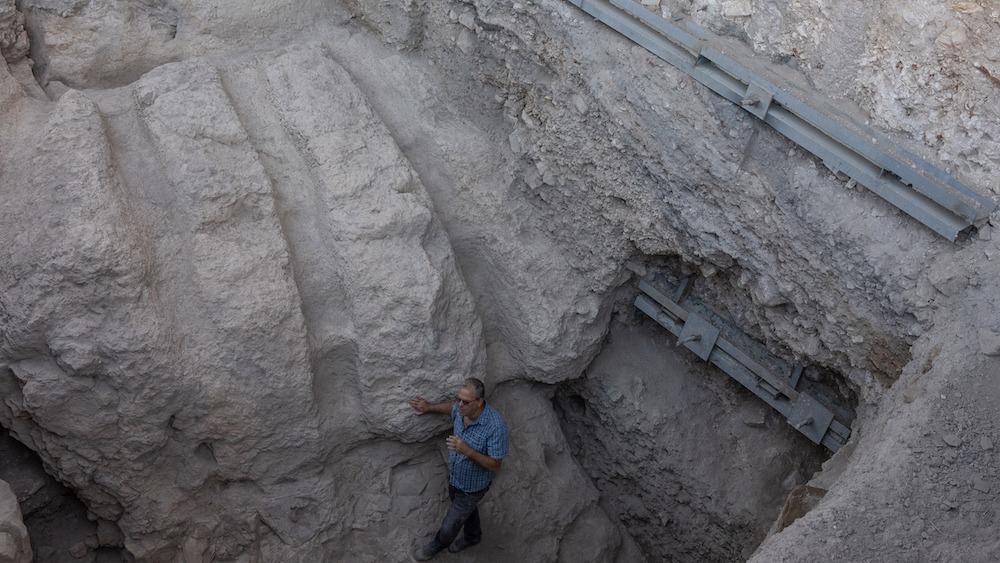Mysterious moat discovered in Jerusalem may have been used to divide the biblical city
An Iron Age moat found in Jerusalem may have been used for defense thousands of years ago.

Archaeologists have discovered a massive moat beneath a parking lot in Jerusalem, and they say the defense structure may have been used to divide the city during biblical times.
Constructed of stone, the ancient moat is nearly 100 feet (30 meters) wide and 20 feet (6 m) deep, and it sits at the bottom of a bedrock ditch. Based on the moat's location, researchers think it once separated much of the ancient city from important holy sites such as the Temple Mount, according to a study published in October 2023 in Tel Aviv, Journal of the Institute of Archaeology of Tel Aviv University.
Researchers are unsure of the exact date of the moat's construction, but they think it was built sometime around the ninth century B.C., during the Iron Age. The moat's purpose also remains unclear and could've been used for any number of purposes.
"In those days it served to divide Jerusalem into two: the acropolis with the temple and palace to its north and the older city to the south," Yuval Gadot, study first author and an archaeology professor at Tel Aviv University who worked on the excavation alongside the Israel Antiquities Authority, told Live Science in an email. "If it was cut in earlier times — something we cannot prove — then its purpose was to defend the city from the north."
Gadot described the architectural feat as "one of a kind" and a "major monumental project that could only be executed by the kings ruling over the city."
Related: Beneath a busy street in Jerusalem sits a 1,000-year-old moat with a secret handprint
"Dating it to the ninth century [B.C.] means this project should be associated with one of Judah's early kings that are mentioned in the Old Testament," Gadot said. "Executing a moat like that exhibits their power and ability to lead monumental projects that altered and reshaped the natural topography of the city for centuries."
Get the world’s most fascinating discoveries delivered straight to your inbox.
In early 2023, archaeologists discovered two sets of channels drilled into the bedrock tunneling beneath the same parking lot where the moat is located, Israeli newspaper Haaretz reported.
The discovery of the moat provides researchers with new insight into the boundaries of the ancient city and what, if any, defense mechanisms Jerusalem employed thousands of years ago.
However, Gadot said some questions remain: How did the city defend itself from the north, how was the Temple Mount incorporated into the city and how was it connected with the older city?"
"The City of David ridge is surrounded by deep valleys from the east, south and west, but there is nothing defending it from the north," Gadot said.
The moat could have served as a northern defense structure.
"Thanks to other excavations, we can see the moat allowed those who built their palace and the temple on the top of Temple Mount, to restrict the approach into the newly built acropolis — to create a physical divide that is also a powerful symbol," he added.
The use of the moat "continued until the Late Hellenistic period [332 to 63 B.C.], when construction activities backfilled the ditch, leading to its disappearance from the cityscape," the researchers wrote in the study.
Jennifer Nalewicki is former Live Science staff writer and Salt Lake City-based journalist whose work has been featured in The New York Times, Smithsonian Magazine, Scientific American, Popular Mechanics and more. She covers several science topics from planet Earth to paleontology and archaeology to health and culture. Prior to freelancing, Jennifer held an Editor role at Time Inc. Jennifer has a bachelor's degree in Journalism from The University of Texas at Austin.


